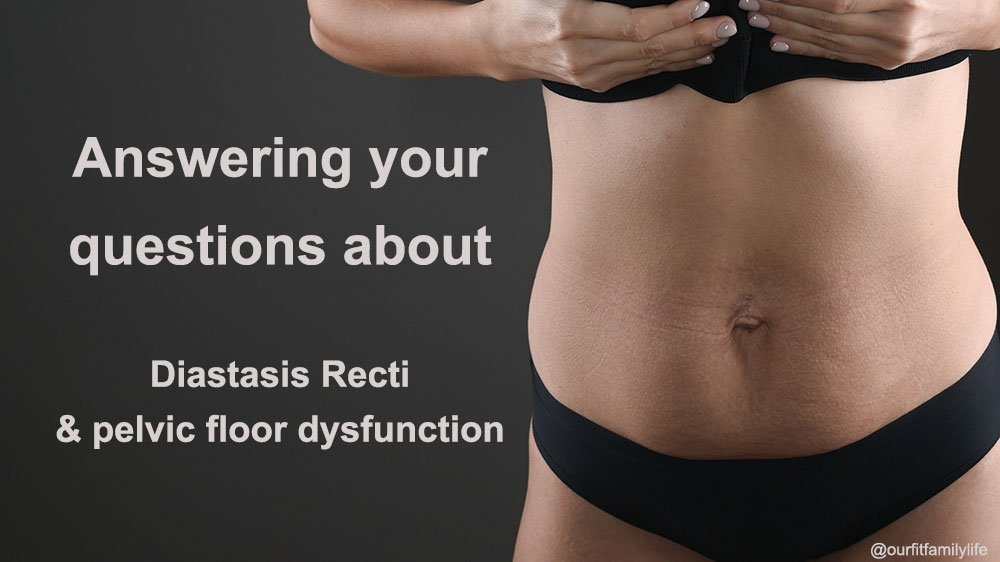Confused about how to approach or continue your postpartum recovery? Let’s dive into Diastasis Recti and pelvic floor healing, shedding light on some of the frequently asked questions I encounter!
This article is for you if you're seeking guidance on restoring your core and pelvic floor at home.
Q/A:
-
If you know me, you know that I’m not a fan of gadgets to improve pelvic floor function… except in this case! Biofeedback devices, which provide real-time feedback on muscle contractions, can help improve your pelvic floor awareness and control.
When using this kind of device - Tune inward. Don’t be passive. The goal is to stimulate the nerves and improve your mind-body connection.
Once you begin feeling the muscles awakening and activating, move away from using these devices and work on activating your pelvic floor muscles on your own - keeping a few things in mind:
Be sure your alignment is correct. You want to align your diaphragm and pelvic floor. They work together.
Use your breath - I often see women holding their breath when trying to engage their pelvic floor muscles, which can place additional strain on your pelvic floor muscles.
Focus on the contraction AND relaxation of the pelvic floor muscles. The goal is to develop more elasticity - not tightness.
Practice in different positions: laying on your back, on your side, on all fours, sitting, standing, etc
Give yourself some grace and be patient. Awareness and continued efforts will pay off.
-
My approach differs from the traditional 'Kegel + movement' concept. A simple 'squeeze' initiating a movement is very different than a coordinated action of all the core elements.
Breath and alignment are at the center of my techniques because they connect everything:
the intricate layers of pelvic floor muscles
the pelvic floor and deep abdominal muscles
the pelvic floor and diaphragm
The goal is to achieve proper coordination between these elements.
We want to develop not only strength but also flexibility and balance within these interconnected elements.
-
There’s actually no such list…
What makes an exercise “safe” comes down to your breathing strategy and core function, not the exercise.
It depends on HOW you perform an exercise. For instance, a basic exercise like glute bridge could worsen your symptoms if done imporperly, and a more advanced exercise like front plank could be done safely.
While basic exercises are great to start with, you need to gradually challenge your core and connective tissue to progress and create change.
Here are some tips to decide if an exercise is safe for you or not:
Can you perform the exercise without holding your breath?
Can you perform the exercise without doming or coning at midline?
If you dome and cone at midline: can you improve your form and breathing strategy to prevent this from happening?
Can you perform the exercise without feeling pressure on your pelvic floor?
Can you perform the exercise without leaking?
If you can check “yes” to all the above, then the exercise is safe! Remember to continue paying attention to the little signals your body sends you as you ease into more advanced exercises.
-
Regardless of if you are 8 weeks postpartum or if your youngest has started University, it’s NEVER too late to:
rebuild your core
improve your core and pelvic floor function
feel better in and about your body!
Some of my clients just had a baby, others already have grandchildren.
Your body regenerates constantly, and it regenerates according to your exercise, foods, daily habits, and movement patterns.
Better nutrition and better movement patterns mean your body regenerates in a better way.
That’s why you need a comprehensive program. Doing the right exercises is just 1 piece of the puzzle.
-
We are all different, so there’s no definitive or specific schedule. Your exact timeline is individual.
It depends on our starting point, daily posture, consistency with your core rehab program, age, number of babies, genes, stress levels, nutrition, etc.
The journey might test your patience, but hang in there! You’ll learn so much about your body and appreciate every little win along the way. ✨
-
It depends!
The good news is that the vast majority of women can improve and heal their Diastasis Recti and pelvic floor dysfunction.
However, not everyone's issues will resolve completely, and the degree of healing can vary.
Try to move away from the ultimate goal of “closing the gap” - we’ve always had a gap, even pre-baby. Prioritize your overall well-being and functional strength. Your core and mental health will thank you. 🩷
I hope this clarifies things. If you still have questions, feel free to reach out here, I’ll get back to you soon!
Ready to take advantage of the training options I offer?
Immediate Postpartum Program - From Birth to 8 weeks PP
Better Body after Baby Program (core rehab after 8 weeks PP)
Return to Running after Baby (impact + strength training)
Membership Program - Follow the training I use for my own fitness

